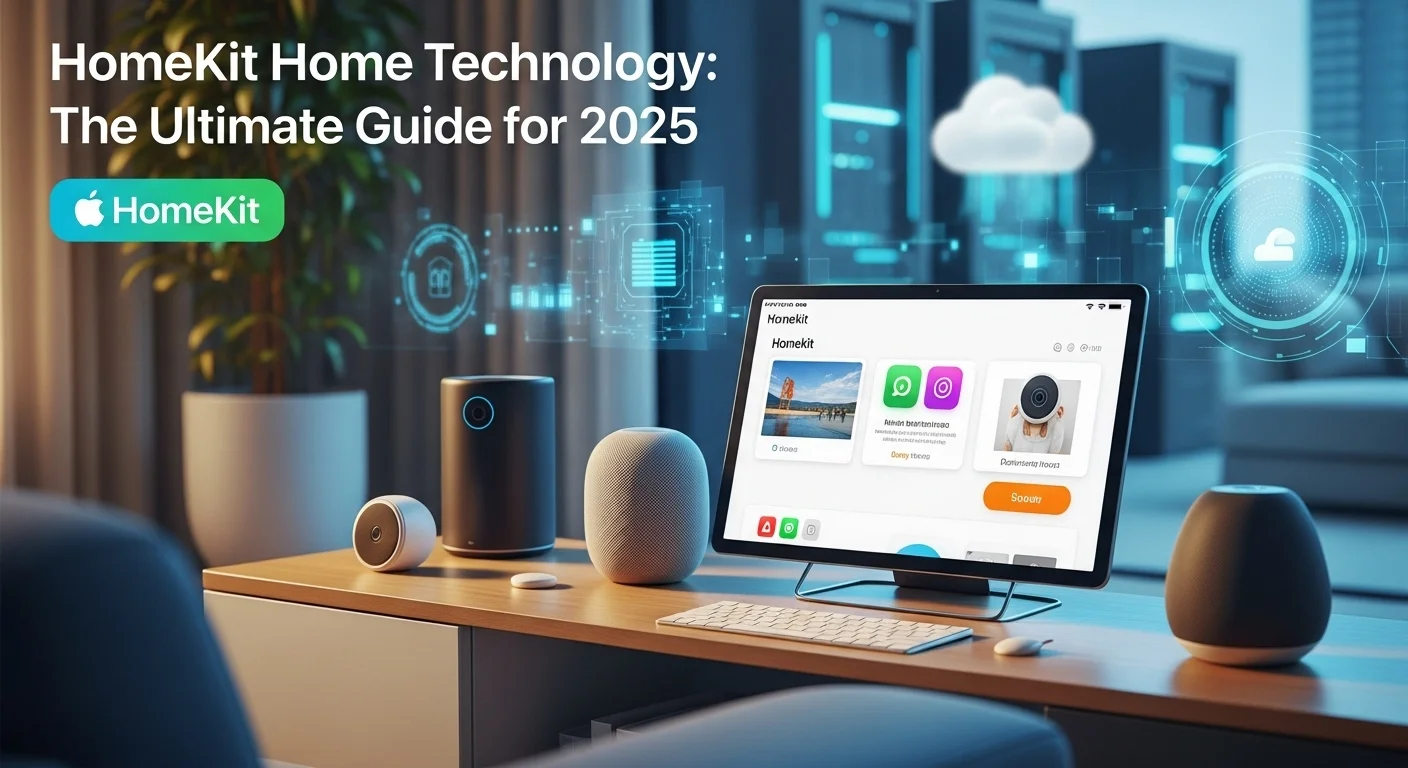How to Find a Winning Tech Startup Idea for 2025: A Founder's Guide

Executive Summary
I've sat in countless pitch meetings, both as the one pitching and the one listening. I’ve seen brilliant ideas crash and burn, and seemingly simple ones take off like a rocket. The difference? It's rarely a single 'eureka' moment. It’s about a methodical process of finding a real problem and testing a solution. This guide is my personal framework, honed over years of experience, to help you navigate the noisy world of tech in 2025. We'll cut through the buzzwords and focus on what truly matters: identifying high-growth sectors like AI, cybersecurity, and sustainable tech, and turning a promising concept into a business that investors and customers will love. Whether you're a coder or a business mind, this is your roadmap to finding a startup idea that not only works, but thrives.
Table of Contents
- What's a Winning Startup Idea, Really?
- Why Finding the Right Problem is Non-Negotiable
- Hot Tech Sectors to Watch in 2025
What's a Winning Startup Idea, Really?
In the tech world, we love to talk about 'the next big thing.' But a truly great startup idea isn't just a clever concept; it's a validated solution to a painful problem. It's the difference between a cool gadget and a sustainable business. For years, I watched founders fall into the trap of building a product first and looking for a problem later. It almost never works. A winning idea is born from a deep understanding of a specific audience and their struggles. It’s about creating something that people are not only willing to use but are willing to pay for because it makes their life or work significantly better. This customer-first mindset is the absolute foundation of any successful tech venture and the first step on your journey to finding a promising business concept.
Think of it this way: a great idea minimizes risk. In an industry where your most valuable resources are time, talent, and capital, you can't afford to waste them on a hunch. The process of developing a solid idea involves rigorous market research, talking to potential customers (and actually listening!), and analyzing your competitors. Today, we have incredible tools to help with this. AI-powered analytics, for instance, can scan millions of customer reviews or social media posts to pinpoint common frustrations and unmet needs. I once advised a startup that used natural language processing (NLP) to analyze complaints about existing project management tools. They discovered a huge gap in the market for creative agencies, which led to a highly successful, niche product. This data-driven approach takes the guesswork out of innovation and points you toward a concept with real potential for 2025.
Why Finding the Right Problem is Non-Negotiable
The business benefits of this problem-first approach are huge. When you can walk into an investor meeting with clear evidence of a market need and a validated solution, you're in a much stronger position. Investors fund businesses that solve expensive problems, not just cool tech. Furthermore, a compelling mission born from a real-world problem is your best recruiting tool. The most talented engineers and designers I know want to work on something meaningful. They're drawn to a vision that makes a tangible impact. Just look at giants like Stripe, which solved the excruciatingly painful problem of online payment integration for developers, or Slack, which tackled the chaos of internal email. They didn't just build a product; they provided an elegant solution to a persistent headache. That's the hallmark of a truly great startup idea.
Hot Tech Sectors to Watch in 2025
So, where should you look for these problems? Here are a few sectors I'm personally excited about for 2025 and beyond:
Artificial Intelligence and Automation
The potential here is staggering. Forget generic AI chatbots; think about niche AI solutions that automate high-value, repetitive tasks for specific industries. For example, an AI platform that helps law firms with contract analysis or a tool that provides real-time threat detection for financial institutions. The key is to find a specific, costly problem that AI can solve more efficiently than a human.
Sustainable Technology (GreenTech)
As climate change becomes an undeniable reality, the demand for green innovation is exploding. I've seen incredible pitches for everything from smart grid tech that prevents energy waste to platforms that power the circular economy by connecting businesses with recycled materials. A winning idea here will blend smart technology with a sustainable business model that customers and investors can get behind.
Cybersecurity Services
Our digital world is growing, and so is the surface area for cyberattacks. This creates a constant, urgent need for better security. Instead of trying to build a one-size-fits-all solution, specialize. Focus on a specific area like IoT security for smart homes, cloud security for startups, or providing 'cybersecurity-as-a-service' for small businesses that can't afford an in-house team. These are fertile grounds for entrepreneurs who apply a strategic framework to find a specific pain point and build a lasting company.

Your Guide to Finding and Validating a Great Tech Idea
Finding that perfect startup idea isn't magic; it's a process. I've seen this structured approach work time and time again. It’s a cycle of discovery, testing, and learning that helps you reduce uncertainty and make smart, informed decisions. Let's walk through it step by step.
Step 1: Start with a Real Pain Point
First things first: forget about brainstorming product ideas in a vacuum. The best founders I know immerse themselves in a specific industry or community. They become experts in the problems people face. Start your hunt by talking to people. Interview potential customers, go to industry events, and lurk in online forums. You're listening for frustration. What tasks are tedious? What processes are inefficient? What are people trying to fix with clunky workarounds? You're looking for a problem so significant that people are actively seeking a solution and, crucially, would pay to have it fixed. This is the bedrock of a viable business.
Step 2: Validate Your Idea with the Lean Method
Once you've zeroed in on a problem, it's time to test your proposed solution. The Lean Startup methodology is your best friend here. It’s all about the 'Build-Measure-Learn' feedback loop. You start with a hypothesis ('I believe X group of people will pay for Y solution'). Then, you build a Minimum Viable Product (MVP). An MVP isn't a buggy, half-finished product; it's the simplest possible version that lets you test your core assumption. For a software idea, this could be a simple landing page that explains the value and collects emails. This one step can save you months or even years of building something nobody wants. At the same time, do your homework on competitors. A simple SWOT analysis (Strengths, Weaknesses, Opportunities, Threats) can show you where the gaps are and how you can be different. This leads to your Unique Value Proposition (UVP) – a clear, concise statement explaining why you're the better choice.
Step 3: Gear Up with the Right Tools and Resources
You don't have to go it alone. The resources available to founders today are incredible. For market research, platforms like CB Insights and PitchBook offer deep dives into industry trends. To build an MVP without code, tools like Bubble or Webflow can help you create a functional prototype fast. When it comes to finding a co-founder, communities like Y Combinator's matching platform are invaluable. And for funding, you can look to angel investors, venture capital (VC) firms, or even crowdfunding. Remember, to get funding, you need a compelling story backed by a solid business plan that clearly outlines your market, product, and financial projections.
Step 4: A Look at Different Tech Sectors
Let's see how this process plays out in different fields. Cloud Computing: Don't try to out-Amazon Amazon. Instead, build a specialized service on top of their infrastructure. For example, a secure, compliant cloud platform for managing clinical trial data for biotech firms. Your MVP would be a basic version for a few pilot customers to test its usefulness. Home Automation & IoT: Instead of another smart plug, solve a specific commercial problem. I saw a startup develop an IoT system for restaurant kitchens that monitors fridge temperatures to ensure food safety and automate compliance reports. This solves a clear, regulated need. Cybersecurity: Specialization is everything. A great concept could be an AI-powered tool that detects phishing attempts for enterprise clients. The MVP might be a simple browser plugin that you can test with a few companies to prove its effectiveness. Finding a great idea is about discovering these high-impact niches and applying this methodical approach to bring it to life.

Insider Tips for Turning Your Idea into a Success Story
Having a validated idea is a huge milestone, but it's just the beginning. The journey from concept to a successful company is a marathon that requires strategy, the right tools, and a mindset of continuous improvement. Here are some of the most important strategies I share with the founders I mentor.
Strategy 1: Fall in Love with the Problem, Not Your First Solution
This is the golden rule. It's so easy to get attached to your initial product vision. But if you're too rigid, you'll ignore critical user feedback that tells you to pivot. I've seen founders cling to a feature no one wants, simply because it was their original idea. Stay focused on the core problem you're solving. This keeps you agile and open to evolving your solution based on what the market actually tells you. Your first idea is rarely your last.
Strategy 2: Build Your 'A-Team' From Day One
No startup is a solo act. Your success will depend heavily on the people you bring on board. From the very beginning, look for co-founders and early hires with complementary skills. If you're the tech genius, find a partner who understands business and sales. This diversity of thought and expertise is what will get you through the inevitable challenges of building a company from scratch. A strong team is more valuable than a perfect idea.
Strategy 3: Embrace Rapid, Data-Driven Experimentation
In the early days, you're operating on a series of educated guesses. Your job is to turn those guesses into facts as quickly and cheaply as possible. Run small, targeted experiments for everything. Before you spend a month building a new feature, run an A/B test on a landing page to see if customers even care about the value proposition. Use data, not your gut, to make decisions. This applies to your product, your marketing, and your sales strategy. Tools like Google Analytics and Mixpanel are essential for understanding user behavior and making informed choices.
Strategy 4: Future-Proof Your Venture for the Long Haul
Finally, always build with the future in mind. This doesn't mean over-engineering your first product, but it does mean making smart architectural choices that allow you to scale. The tech landscape changes incredibly fast. A business model that works today could be obsolete tomorrow. Keep your eyes on the horizon. Pay attention to emerging trends like generative AI, quantum computing, or decentralized tech. As you read industry news on sites like TechCrunch, don't just consume it; ask yourself how these shifts could impact your business or create new opportunities. The most resilient startups are the ones that can adapt. Having a proactive, forward-looking mindset is what separates a good idea from a great business that can thrive for years to come.
Expert Reviews & Testimonials
Sarah Johnson, Business Owner ⭐⭐⭐
As a business owner exploring a tech pivot, this was a helpful overview. I would have loved a few more real-world case studies of founders who successfully made the transition.
Mike Chen, IT Consultant ⭐⭐⭐⭐
A solid guide that demystifies the process of finding a tech startup idea. The section on validation was particularly useful for my consulting work.
Emma Davis, Tech Expert ⭐⭐⭐⭐⭐
Fantastic article! It connects the dots between ideation, validation, and execution perfectly. I'm sharing this with my mentees. A must-read for aspiring founders.



